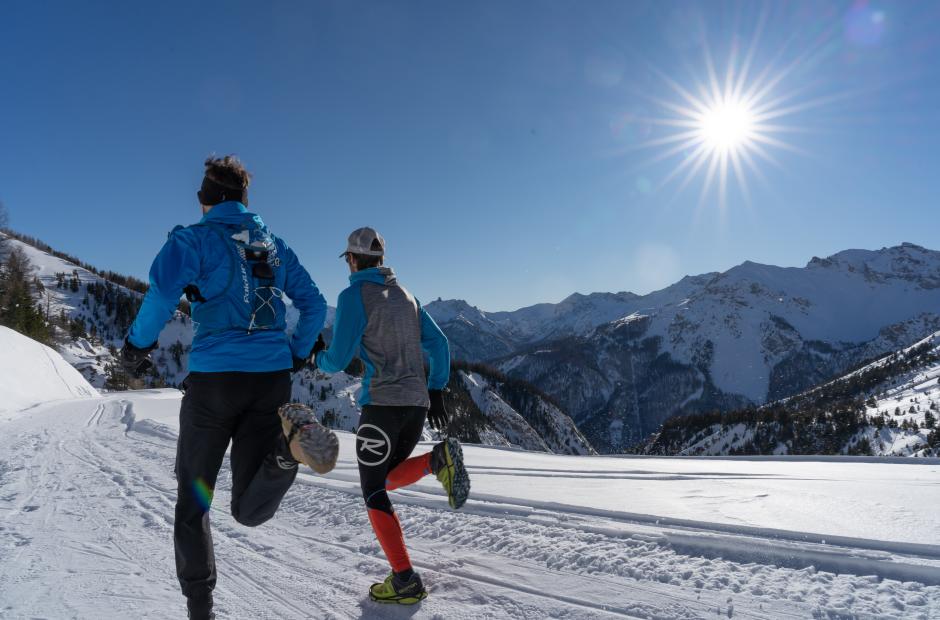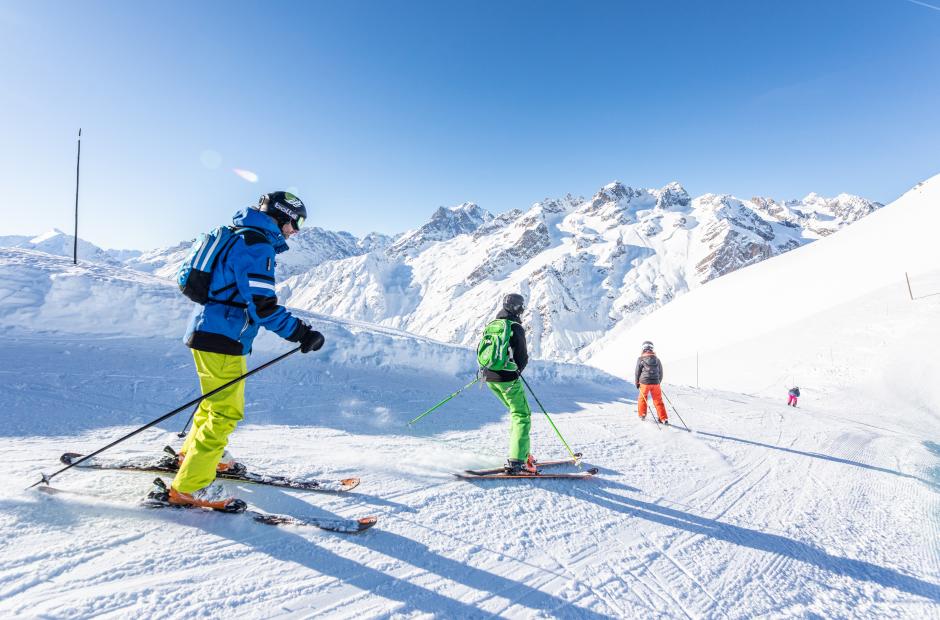Villeneuve / La Salle-les-Alpes The heart of the valley
Villeneuve - La Salle les Alpes
The heart of the Valley
A world of possibilities! Villeneuve la moderne boasts residences at the foot of the slopes, providing direct, easy access to the largest ski area in the Southern Alps.
It's no coincidence that UCPA and Club Med have chosen to set up in the heart of this central spot, renowned for its skiing.
Around its climbing wall, erected like a totem to set the tone, the sporty Villeneuve stretches out its range of activities, from fatbike to cross-country skiing, from swimming pool to ice rink, from snowshoe outings to dog-sled rides.
At the ski school reception and mountain guide office, the list goes on and on: paragliding, mountaineering, ice climbing, sit-skiing, cross-country skiing, heli-skiing, yoga snowshoeing, glacier trekking... Not to mention the crazy Deval'Bob toboggan run, offering 4 kilometers of ultra-fun descents through the larch trees.
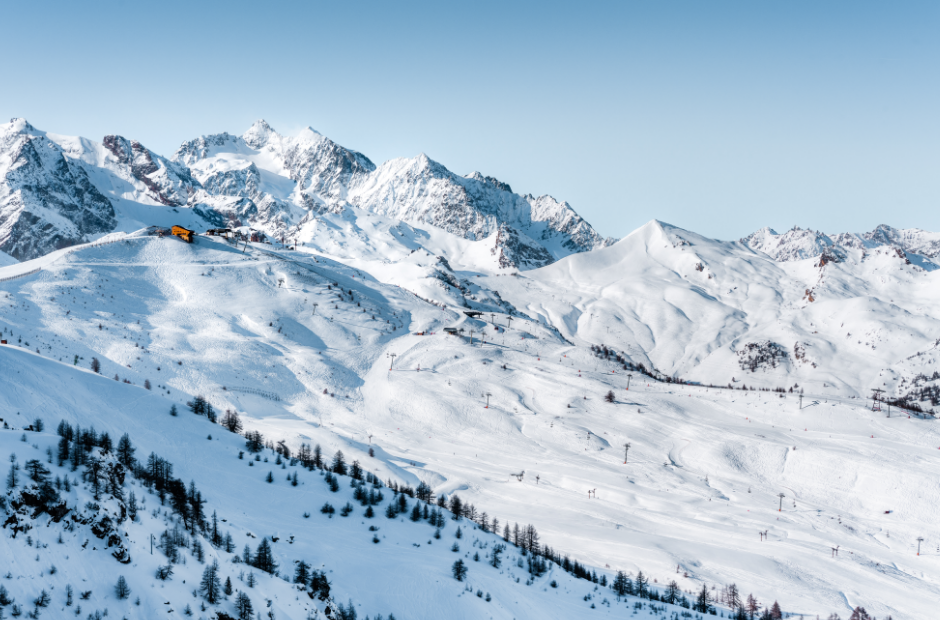
In the Parc du Pontillas, around the dormant organic swimming pool, you can also try your hand at Nordic sliding, running or walking on the snow-covered paths leading up the valley, immersing yourself in nature, contemplating the beautiful mountains, filling up on oxygen... and trying to compete with the traileurs taking part in the 8, 10 and 20 km Serre Chevalier Snow Trail in January.
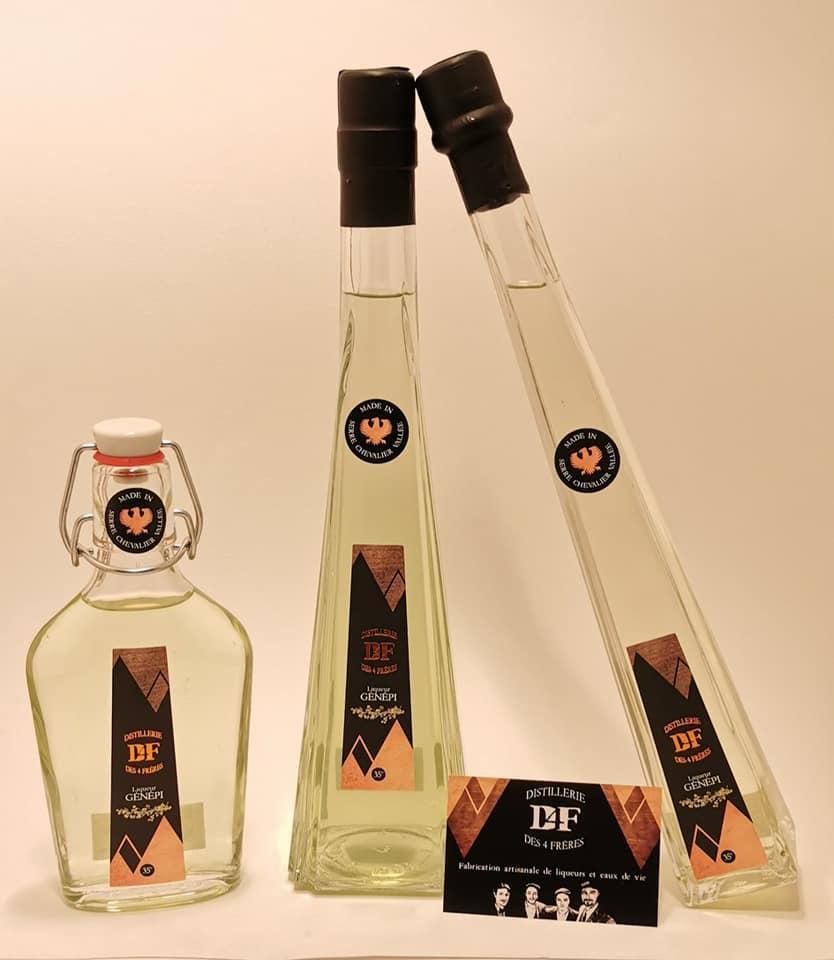
The hamlet of Le Bez , on this ubiquitous hillside, offers an interlude between tradition and modernity!
A village of stone houses at the crossroads of the ski slopes. In the mysteriously-named passages that converge on the Place du Touron, its church and washhouse, you'll come across helmeted skiers, wide skis on their shoulders, returning from an idyllic powder outing. Time stretches on in this hamlet, which delightfully combines anachronisms and delights visitors in search of authenticity and a change of scenery... combined with great skiing... on their feet!
All you have to do is cross the Guisane to discover the old village of La Salle-les-Alpes, its shopping street crowded with tall houses with colorful facades, its stores, bars and restaurants, its Sainte Luce chapel transformed into the Autrefois mon village museum, and then higher up, clinging to the slopes overlooking the valley, the hamlet of yesteryear organized around the Saint-Marcellin church (15th century), its fountain and its local school, still in operation today.
Pastoral life at the time of the sundial can still be seen in the narrow streets, where barns, vegetable gardens and pastures follow one another.
On these sun-drenched heights, from the Chirouze to the Pananches districts, calm reigns, in contrast to the hustle and bustle of the vibrant resort. So close by, the distillers of the Distillerie des 4 Frères pour their liqueurs into their stills dating back to 1921..
Did you know?
In the 50s and 60s, Léon Agel, lyricist of the famous song Mon amant de Saint-Jean, invested his royalties in the Place de l'Aravet, where he built several residences and financed the gondola.
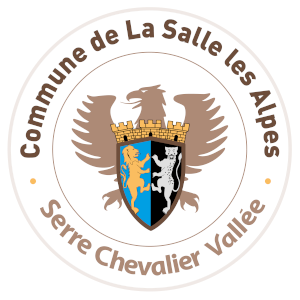
Opposite, in the ski area, contemplative gondola-climbers admire the peaks from the high-altitude restaurants, while breath-seekers work their lungs out as they scramble up the slopes, acrobats and void-tamers do a few pitches on the climbing routes and have fun on the aerial via ferratas, naturalists observe the flora and fauna floor by floor, and history buffs list the customs and habits of life in the alpine hamlets. A well-orchestrated symphony of sporting and cultural events sets the tempo for La Salle-les-Alpes.
Pour rendre votre séjour encore plus facile et agréable, nous vous proposons notre moteur de réservation en ligne.
Grâce à notre moteur de réservation, vous pouvez réserver votre hébergement en quelques clics seulement. Que vous préfériez un hôtel confortable, un chalet chaleureux ou un appartement spacieux, notre moteur de réservation vous permet de trouver l'option qui correspond parfaitement à vos besoins.


